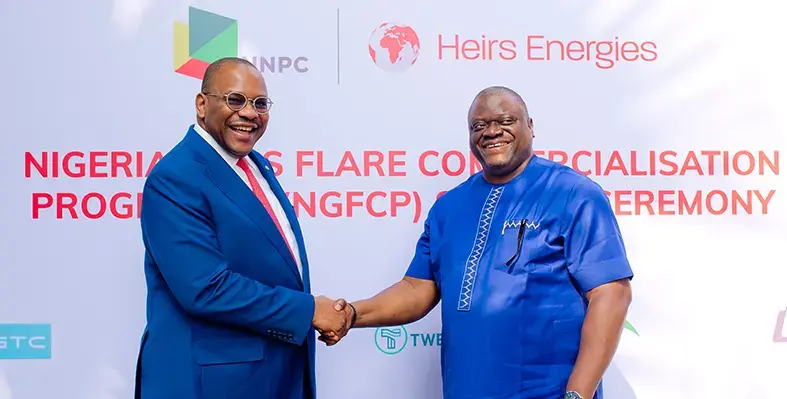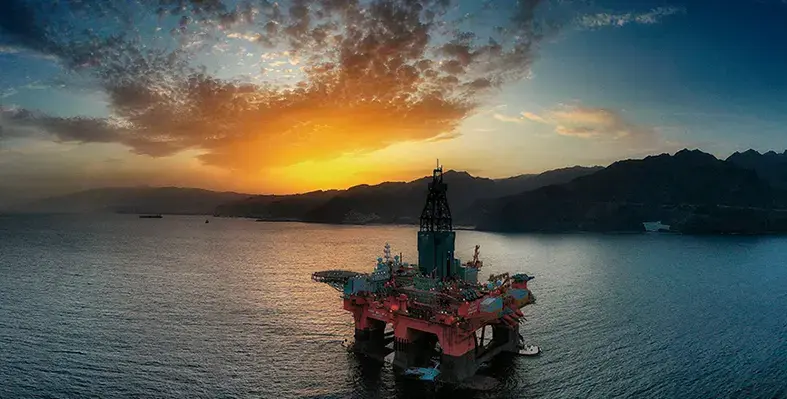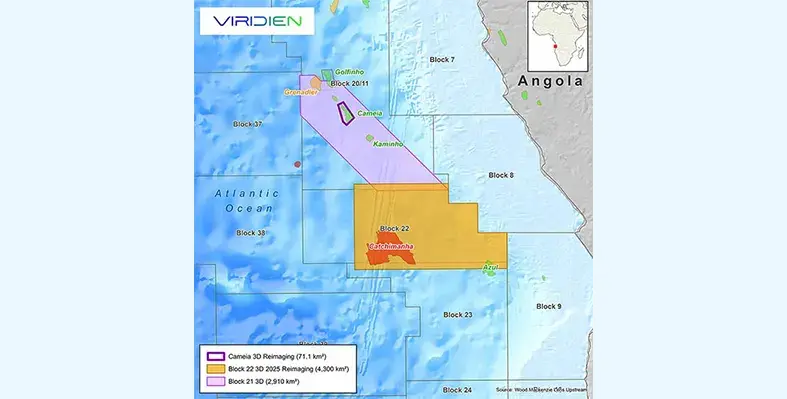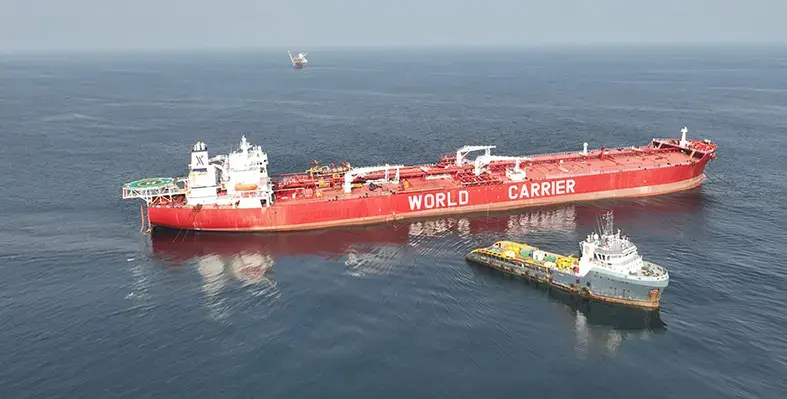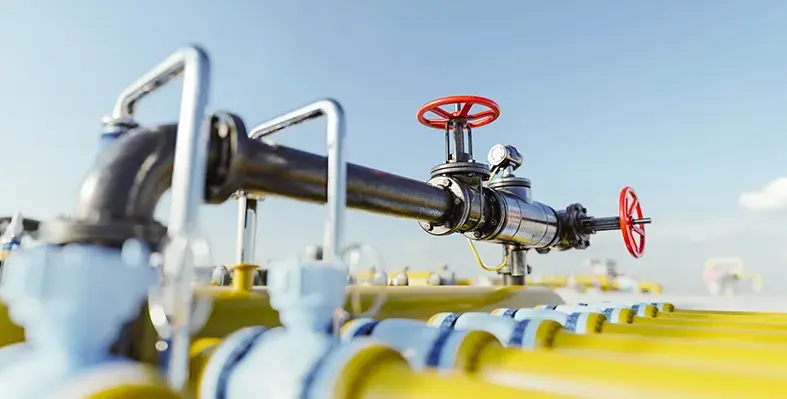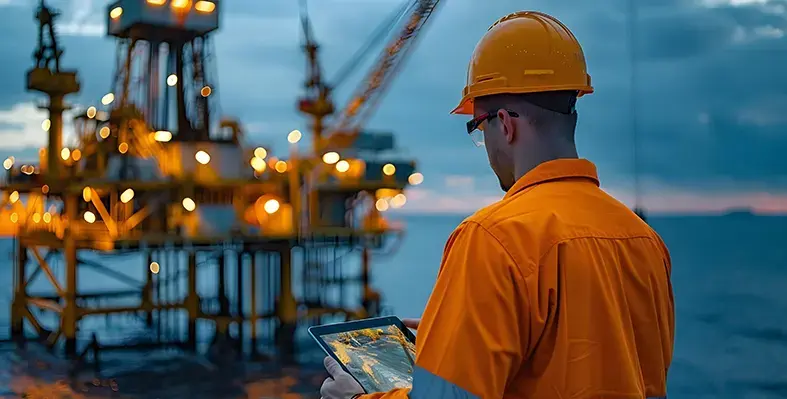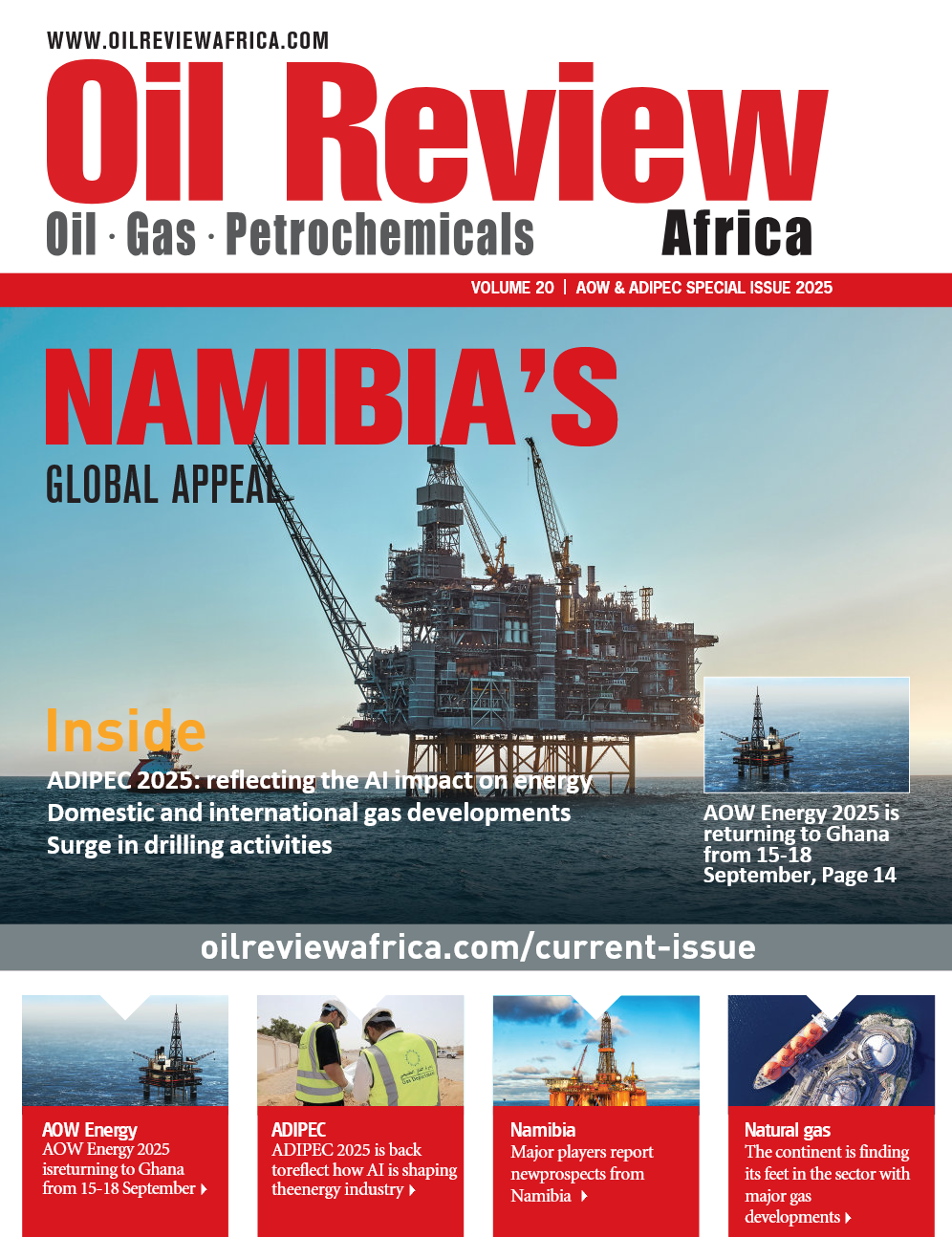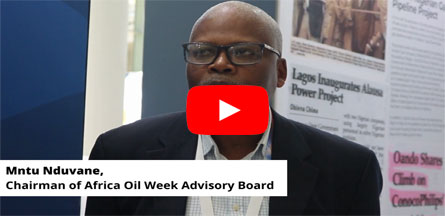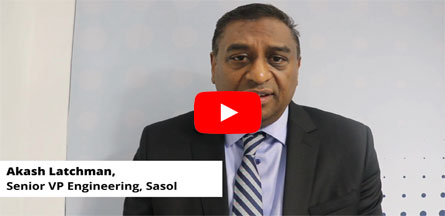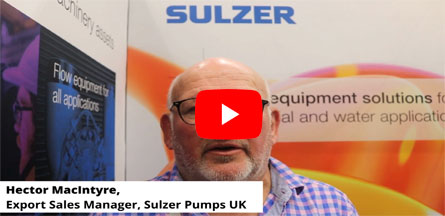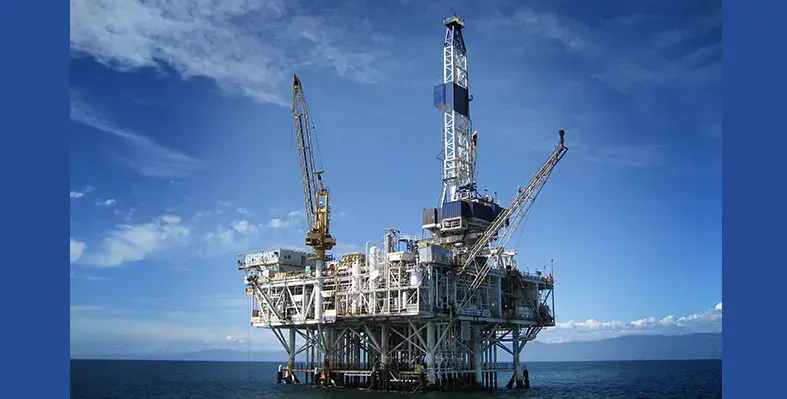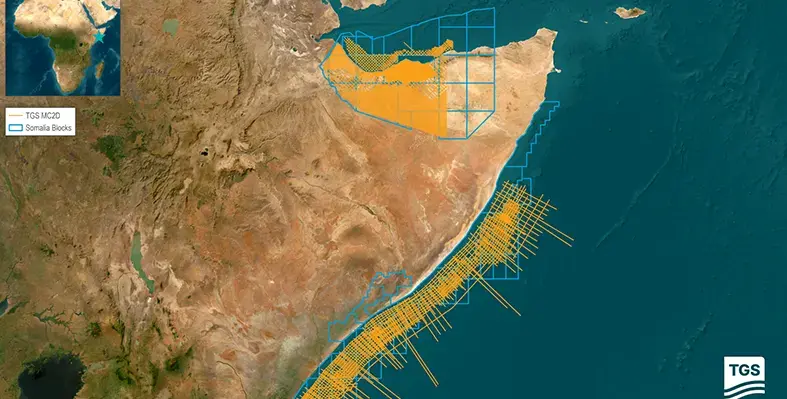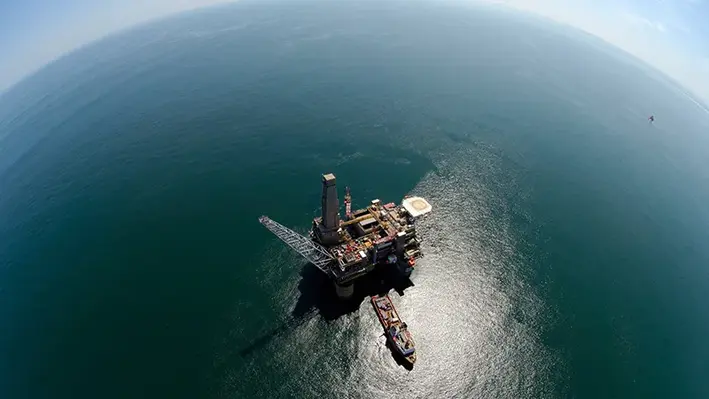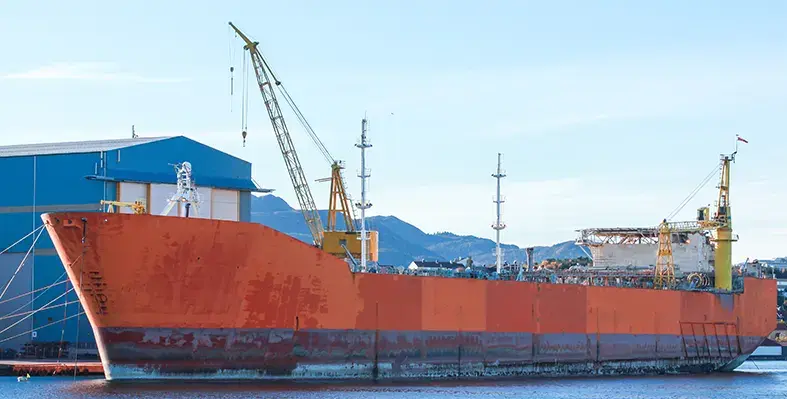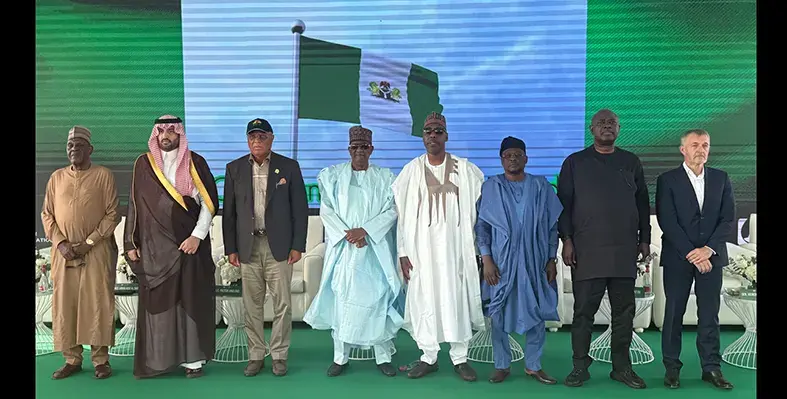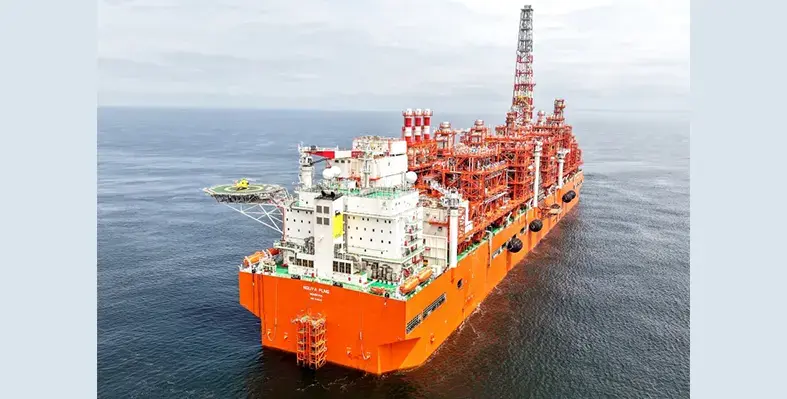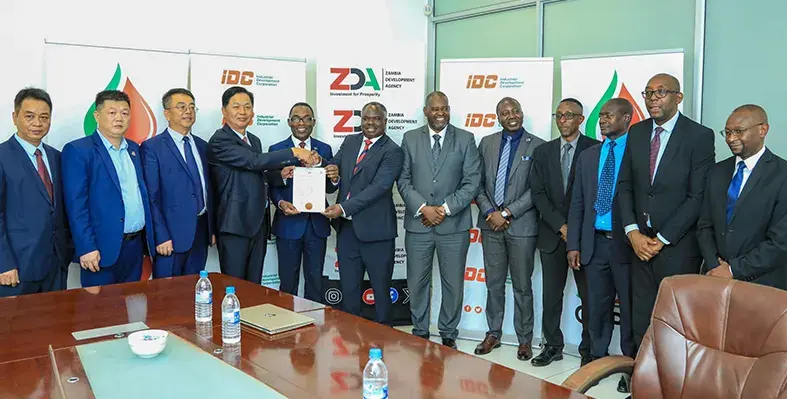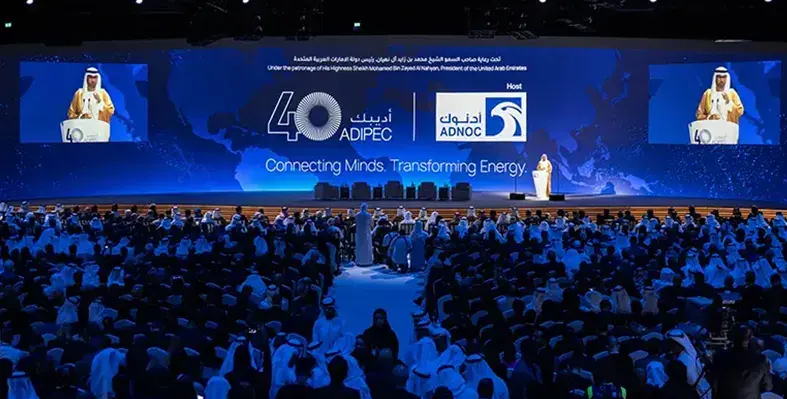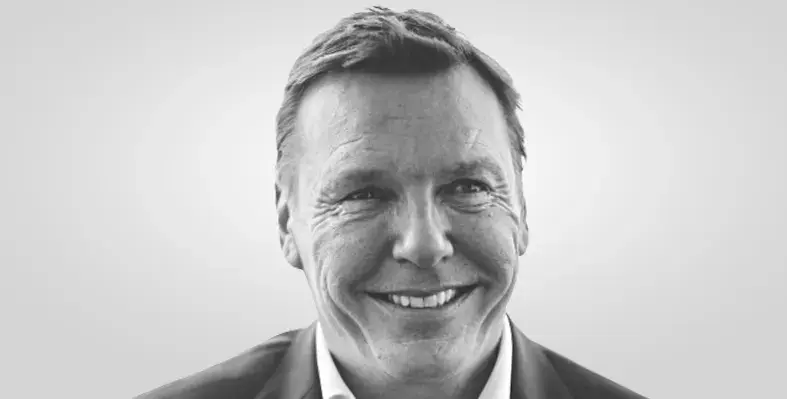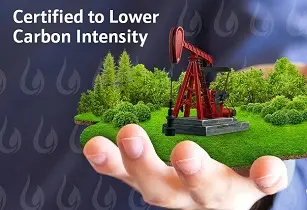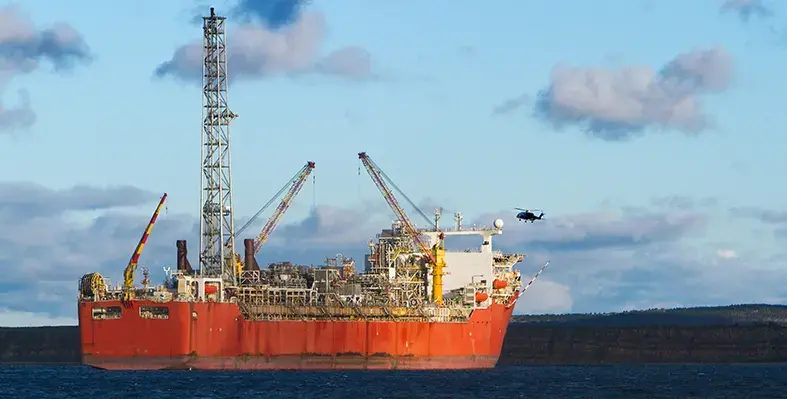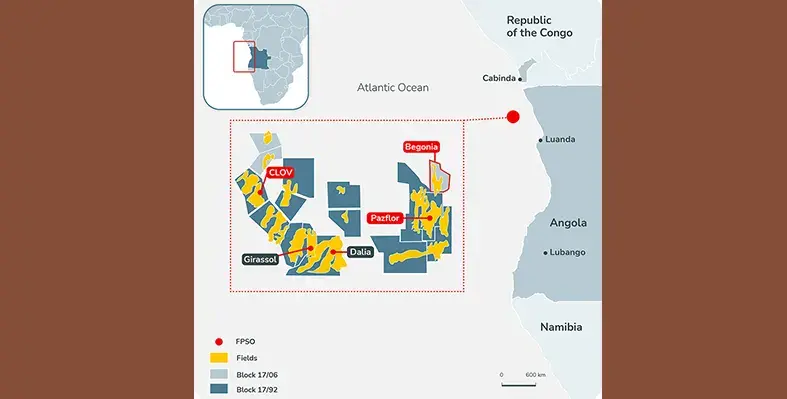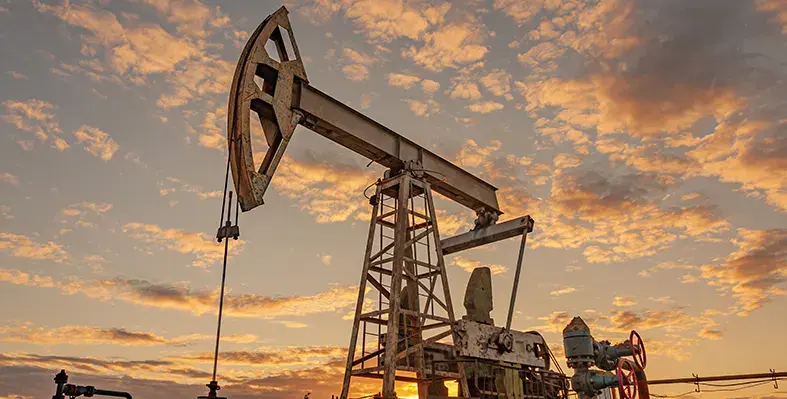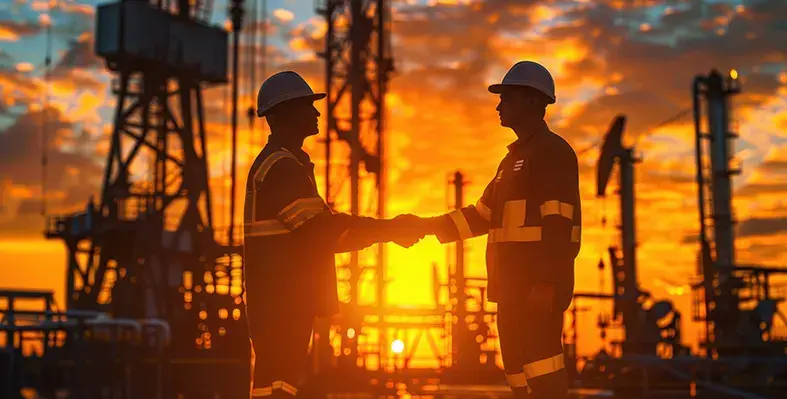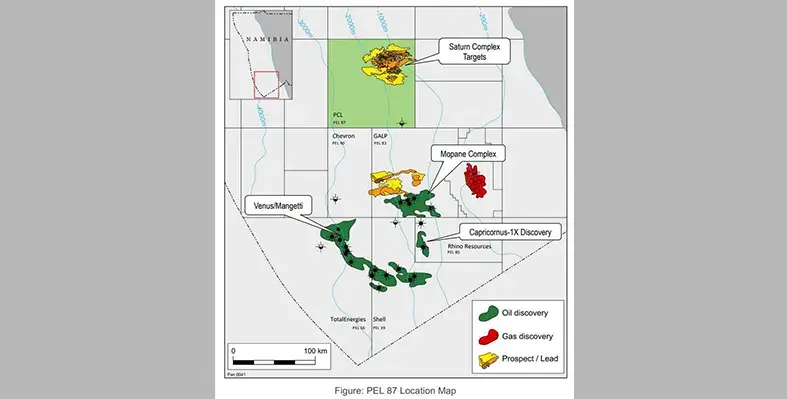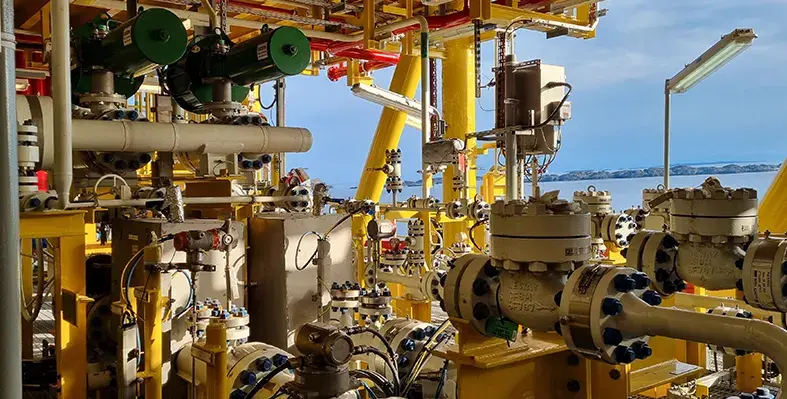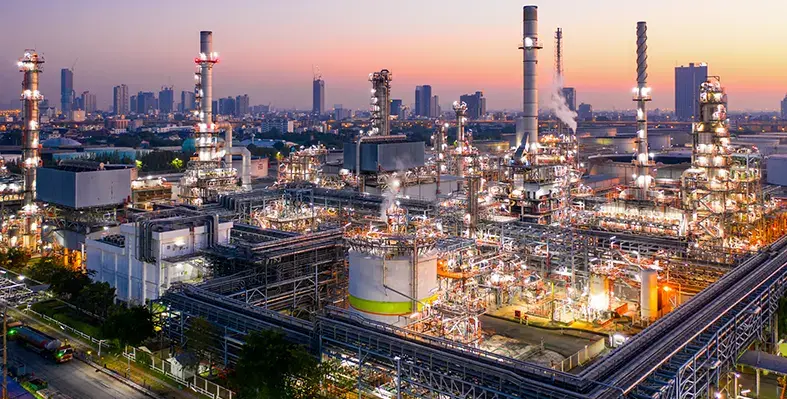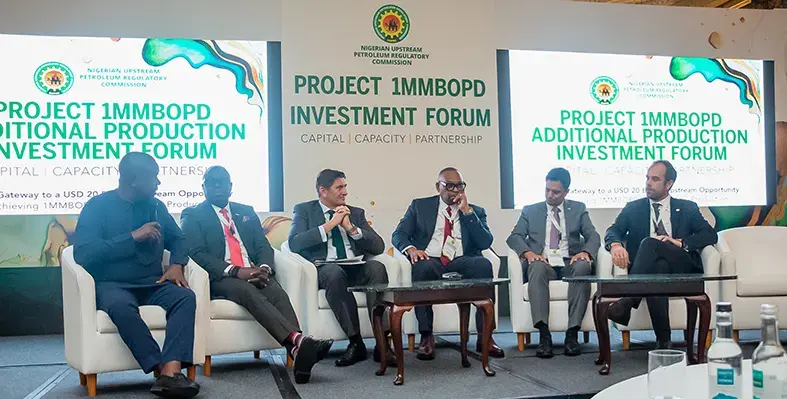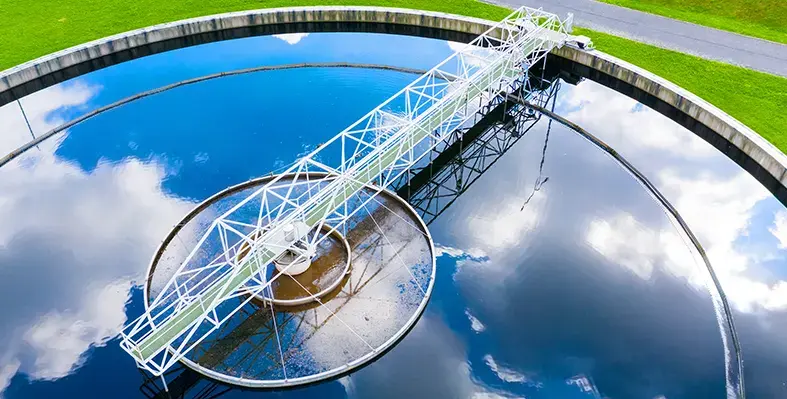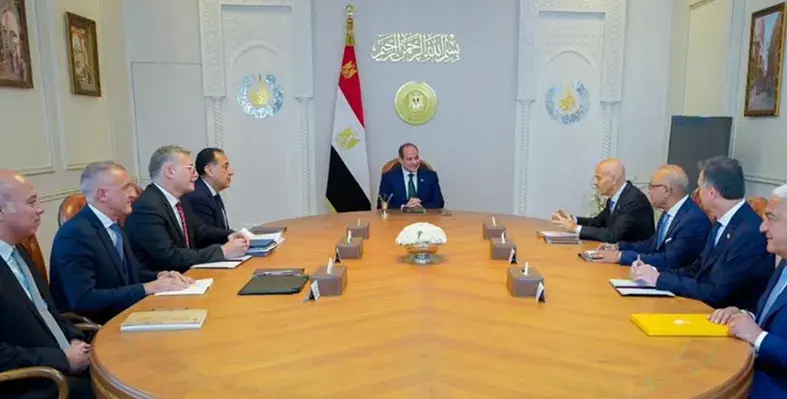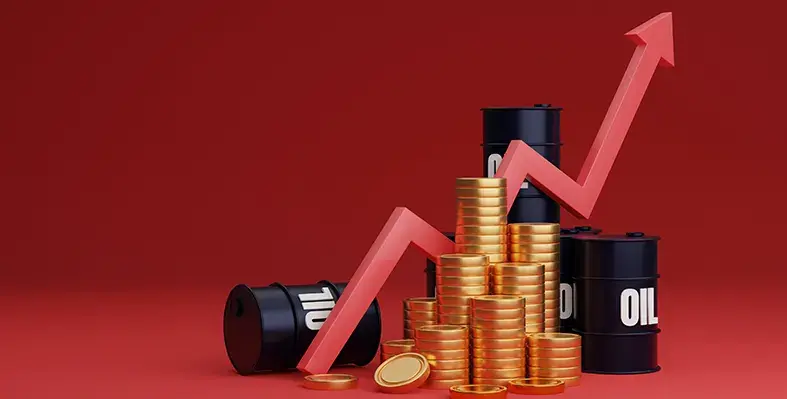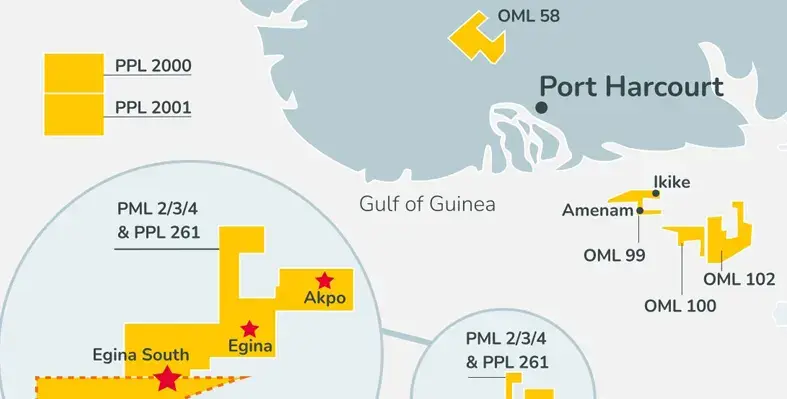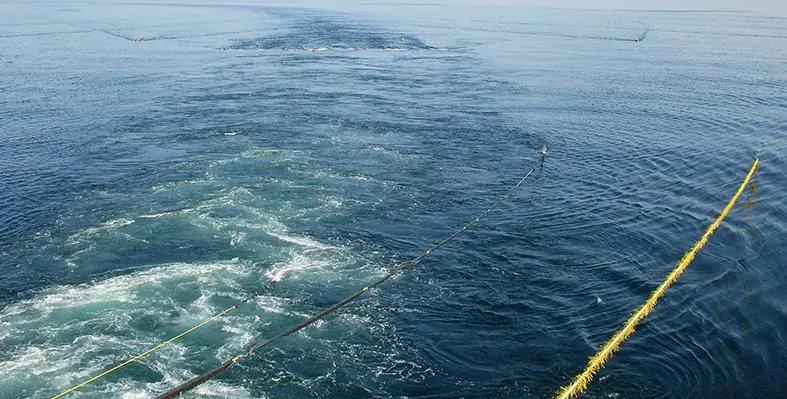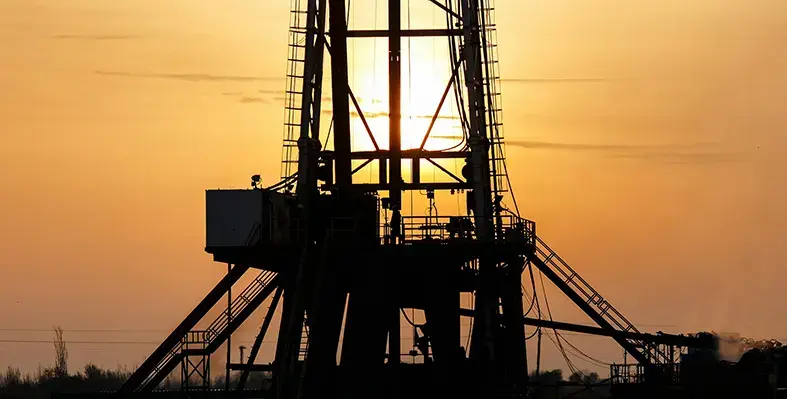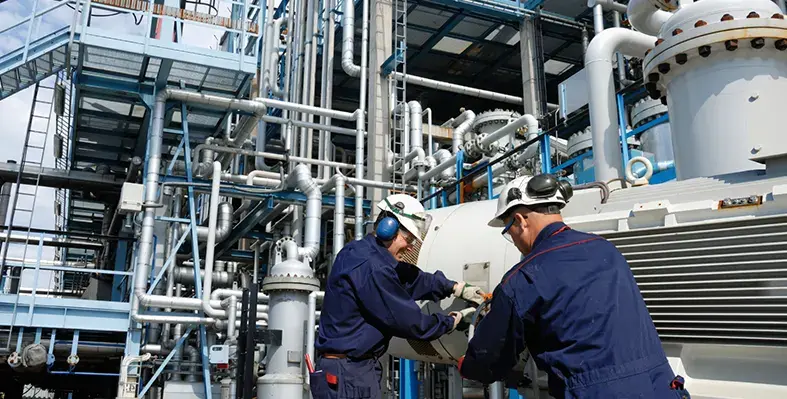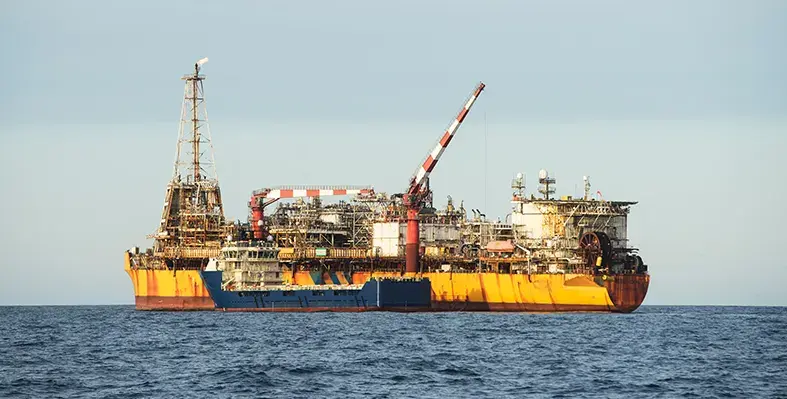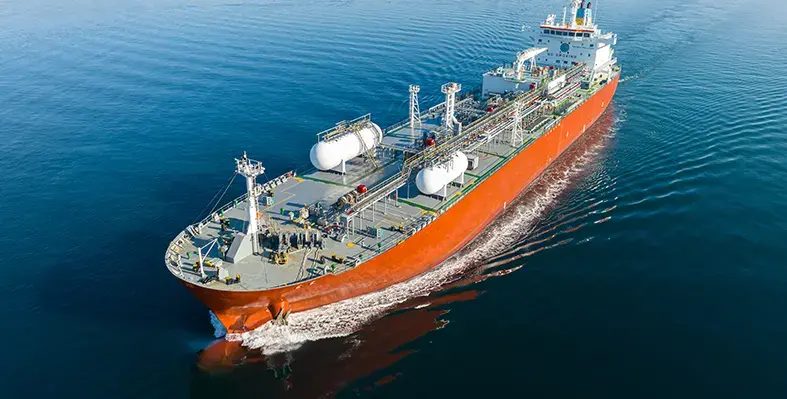In The Spotlight
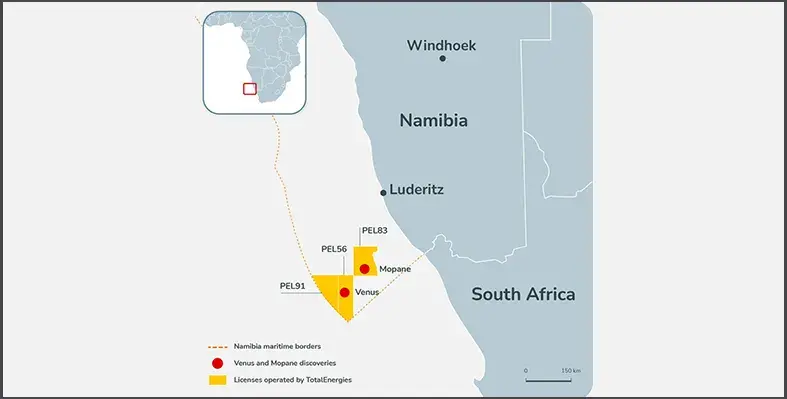
TotalEnergies and Galp will launch an exploration and appraisal campaign in Namibia. (Image source: Total Energies)
In keeping with TotalEnergies' asset-swapping approach in Africa, the major has now concluded an agreement with Galp in Namibia, similar to its last deal in Nigeria with Conoil
As per the agreement, the oil giant will be acquiring from Galp a 40% operated interest in PEL83, which includes the Mopane discovery. Alongside supporting the initial development of PEL83, it will also cover 50% of Galp’s capital expenditures for the exploration and appraisal of the Mopane discovery. Galp will then return the favour by sharing 50% of its future cash flows from the project.
On the other hand, it will also acquire from TotalEnergies a 10% participating interest in PEL56, which includes the Venus discovery, and a 9.39% participating interest in PEL91.
The partners will launch an exploration and appraisal campaign including three wells over the next two years, with a first well planned in 2026, to further derisk resources and progress diligently toward the development of the Mopane discovery.
Concurrently, TotalEnergies, operator of PEL56, remains fully committed to the development of the Venus discovery and is working to secure all conditions enabling a potential final investment decision in 2026.
"We are very happy to have been selected by Galp as their partner and operator for the prolific PEL83 license, including the Mopane discovery in Namibia. This is a strong recognition of the exploration and deepwater competences of TotalEnergies teams. This transaction demonstrates also the strong confidence of TotalEnergies towards Namibia as a future oil producing country. TotalEnergies will leverage its recognised operatorship track record to progress towards profitable and sustainable developments of both Venus and Mopane discoveries. By enabling the creation of a producing hub in Namibia, we aim to achieve synergies that will create long-term value for both Namibia and the stakeholders," said Patrick Pouyanné, chairman and CEO of TotalEnergies. "We are eager to keep building on our collaboration with the Namibian authorities in order to deliver both developments."
Completion of the transaction is subject to customary third party approvals from the Nambian authorities and joint ventures parties, with completion expected to occur in 2026.
Other partners involved the Blocks include Namcor, Custos, QatarEnergy, and Impact.
Mana Energy has commenced the initial commissioning activities for the TE-5 Horst development project in the Tendrara Production Concession as first gas entered the gas gathering system (GGS) in preparation for long term gas production into the micro-LNG plant
This follows the successful installation of the SCADA (Supervisory Control and Data Acquisition) computer that was an integral equipment to ensure safe flow from the TE-6 production well for GGS to commence.
The micro-LNG Plant has been designed, is being constructed and will be operated and maintained by Italfluid Geoenergy with guarantees for plant operability and delivery of LNG to the off-taker, Afriquia Gaz, a primary energy distributor in Morocco. A binding gas sales agreement and associated funding are in place with Afriquia Gaz, with a 10-year commitment from first gas to purchase a contractual quantity of one hundred million normal cubic metres per annum.
The development will use existing wells TE-6 and TE-7, and one new well to deliver the required raw gas volumes into the plant for the Phase 1 development and maintain a ten-year production plateau under the gas sales agreement. Construction of the micro-LNG plant continues at site, with revenue generating LNG sales forecast by the contractor, ITF, to commence late Q1 or Q2 2026.
Majid Shafiq, Chief Executive Officer, said, "We are pleased that we have reached another milestone to bring gas to Moroccan industrial consumers and congratulate the operator, Mana Energy Ltd. I look forward to full commissioning of the micro-LNG facility and delivery of sales gas in the coming months. We are entering an exciting period at Sound Energy as we become a revenue generating company, whilst progressing to the FID for the second phase of development of the entire field, to supply Moroccan power markets."
Reconnaissance Energy Africa has completed drilling operations at the Kavango West 1X well located on Petroleum Exploration Licence 73 onshore Namibia
Brian Reinsborough, president and CEO, said, “ReconAfrica is excited to announce that the Kavango West 1X well has encountered hydrocarbon pay in the Otavi reservoir section. The results from this well have allowed the Company to proceed to a success case evaluation, which includes conducting a production test of prospective intervals to determine deliverability characteristics from the well. We are excited about what the results mean for the future of the Damara Fold Belt play on ReconAfrica’s lease position onshore Namibia which covers over six million prospective acres. I am also very proud of the ReconAfrica team who drilled this well safely, on schedule and on budget with strong local stakeholder engagement.”
The well reached a total depth (TD) of 4,200 m (13,800 ft) and conducted an extensive wireline logging programme. The well has been temporally abandoned and will be re-entered once testing equipment arrives in the first quarter of 2026.
Extensive wireline logging indicates ~85 m (~280 ft) of net reservoir with 64 m (210 ft) of net hydrocarbon pay across a gross interval of ~400 m (~1,300 ft) containing multiple limestone reservoir units. Mud and gas samples have been collected throughout the well and will be sent to the Unites States for analysis. No core samples were taken in this well.
Next, the company will be testing the well to establish flow rates from intervals of interest. This will help study the positive indications of hydrocarbon-saturated reservoirs based on wireline logs and oil and gas shows in addition to interpreted natural fractures in the limestone reservoir units, which should enhance deliverability of hydrocarbons.
A production test will be conducted to determine the deliverability characteristics of the intervals of interest within the Otavi carbonate section. The production test will be run in 5-inch production casing with Tubing-Conveyed Perforations (TCP) to selectively perforate intervals based on where hydrocarbon pay has been identified on wireline logs and where significant oil and gas shows were encountered. Intervals of interest will be the 64 metres of hydrocarbon pay identified on wireline logs and an additional 61 metres of oil and gas shows identified in the deeper sections where interpreted natural fractures in the limestone reservoir units should enhance deliverability of hydrocarbons. Planning and logistics have begun for this test, which is anticipated to occur in the first quarter of 2026 and should run for approximately one month in duration.
Cairo, Egypt

TotalEnergies and Galp will launch an exploration and appraisal campaign in Namibia. (Image source: Total Energies)
In keeping with TotalEnergies' asset-swapping approach in Africa, the major has now concluded an agreement with Galp in Namibia, similar to its last deal in Nigeria with Conoil
As per the agreement, the oil giant will be acquiring from Galp a 40% operated interest in PEL83, which includes the Mopane discovery. Alongside supporting the initial development of PEL83, it will also cover 50% of Galp’s capital expenditures for the exploration and appraisal of the Mopane discovery. Galp will then return the favour by sharing 50% of its future cash flows from the project.
On the other hand, it will also acquire from TotalEnergies a 10% participating interest in PEL56, which includes the Venus discovery, and a 9.39% participating interest in PEL91.
The partners will launch an exploration and appraisal campaign including three wells over the next two years, with a first well planned in 2026, to further derisk resources and progress diligently toward the development of the Mopane discovery.
Concurrently, TotalEnergies, operator of PEL56, remains fully committed to the development of the Venus discovery and is working to secure all conditions enabling a potential final investment decision in 2026.
"We are very happy to have been selected by Galp as their partner and operator for the prolific PEL83 license, including the Mopane discovery in Namibia. This is a strong recognition of the exploration and deepwater competences of TotalEnergies teams. This transaction demonstrates also the strong confidence of TotalEnergies towards Namibia as a future oil producing country. TotalEnergies will leverage its recognised operatorship track record to progress towards profitable and sustainable developments of both Venus and Mopane discoveries. By enabling the creation of a producing hub in Namibia, we aim to achieve synergies that will create long-term value for both Namibia and the stakeholders," said Patrick Pouyanné, chairman and CEO of TotalEnergies. "We are eager to keep building on our collaboration with the Namibian authorities in order to deliver both developments."
Completion of the transaction is subject to customary third party approvals from the Nambian authorities and joint ventures parties, with completion expected to occur in 2026.
Other partners involved the Blocks include Namcor, Custos, QatarEnergy, and Impact.
BW Energy has drilled the Kharas-1 appraisal well in the Kudu license area, offshore Namibia, at a total depth of 5,100 m and intersected multiple reservoir intervals
With drilling completed, the well will now be plugged and abandoned in line with the planned programme.
The well has revealed multiple shallow turbidite reservoirs with dry-gas shows, and reservoir properties from these and the acquired whole core are now being evaluated.
Hydrocarbons were encountered in deep inside a fractured volcaniclastic reservoir, pointing to a working petroleum system with condensate and/or light oil. Further analysis is ongoing to determine the extent
of the system and to characterise reservoir properties and appraisal options.
"Kharas-1 achieved its technical objective of testing multiple targets within a single penetration and delivered valuable geological, geochemical and petrophysical data. The results also confirm, for the first time, the presence of liquid hydrocarbons within the Kudu block and contribute to our understanding of the broader petroleum system. The reservoir complexity necessitates further appraisal to assess its potential. Our forward programme will focus on further high value targets based on the presence of liquid hydrocarbons, as well as gas and the learnings from Kharas-1A," said CEO Carl Arnet.
Nigeria's HI gas field development will be supported by Halliburton by the way of an integrated drilling services contract for Shell Nigeria Exploration and Production Company (SNEPCo), in collaboration with Sunlink Energies
The HI gas field development, which is part of OML 144, will see Halliburton's services for advancing feed gas supply to the Nigeria LNG Train 7 facility.
"This contract reflects our dedication to deliver integrated solutions that improve performance and efficiency in offshore environments. The company will deploy technologies integrated with LOGIX automation and remote operations to help improve drilling precision, efficiency, and safety in offshore operations. Our collaboration with SNEPCo and Sunlink Energies advances the HI gas field and contributes to the future of the energy industry in Nigeria," said Shannon Slocum, president, Eastern Hemisphere at Halliburton.
Halliburton’s project management team will support the drilling execution and provide integrated services to deliver end-to-end solutions. The company's advanced technology solutions combined with its strong presence in Nigeria will advance the HI Project’s operational and production goals.
The Congo LNG project by Eni advances to Phase 2 with gas introduced into the new offshore infrastructure system and the Nguya FLNG floating liquefaction unit ready to support operations
Moving ahead of the schedule as a result of rigorous industrial planning, Eni is aiming export of the first LNG cargo early next year.
Alongside the FLNG unit for liquefaction and export, the project's massive capacity of 3 mn tonnes per annum will be supported by three production platforms, and the Scarabeo 5 unit dedicated to gas treatment and compression.
Linked to the offshore Nené and Litchendjili fields in the Marine XII license, the integrated configuration will develop vast gas resources from the region, tackling the volumes in a phased manner to ensure flexibility and a steady flow to both the Tango FLNG unit, operational since late 2023, and the Nguya FLNG.
A work of technological innovation, the 376m-long and 60m-wide Nguya FLNG is an optimised and sustainable unit that not only process gas with varried compositions but can also support additional field development.
Meanwhile, the Scarabeo 5 unit too is equipped with decarbonisation-oriented solutions. The unit was repurposed from a drilling rig into a gas treatment, separation, and compression unit.
Carried out majorly in Congo, the project was largely led by local stakeholders.
Major refining projects are set to transform Africa’s energy landscape and boost self-suffciency
Africa is set to add 1.2mn barrels per day (bpd) of new refining capacity by 2030, representing one of the fastest downstream expansions globally, according to the newly released 2025 OPEC World Oil Outlook.
At the forefront of Africa’s refining expansion is Nigeria’s 650,000-bpd Dangote Refinery, which began operations in 2024 and is already reshaping regional fuel trade dynamics. Further developments include the 200,000-bpd Akwa Ibom Refinery, also in Nigeria, and Angola’s state-driven push to bring online the 200,000-bpd Lobito Refinery and 100,000-bpd Soyo Refinery by 2030.
Uganda’s refining ambitions are taking shape with a 60,000-bpd facility in Hoima, part of the country’s broader Lake Albert basin development plan, while modular refinery projects in Ghana, Guinea-Conakry, the Republic of Congo and additional sites in Nigeria are buiding capacity in markets where infrastructure and financing hurdles persist. In North Africa, Algeria (Hassi Messaoud), Libya (Ubari) and Egypt (Soukhna) are all advancing refinery projects aimed at capturing higher margins, improving domestic supply security and reducing dependency on imports of refined petroleum products.
According to OPEC, Africa will need over US$40bn in refining investments by 2030 to meet its mid-decade objectives, and beyond that, an additional US$60+ billion for refinery construction, modernisation and secondary processing capacity upgrades. This opens a US$100 billion investment opportunity for project developers, institutional investors, sovereign wealth funds and energy-focused private equity.
Africa’s rising domestic consumption of crude – forecast to reach 4.5 million bpd by 2050 from just 1.8 million bpd in 2024 – further underlines the need for investing in downstream infrastructure.
If the continent seizes this momentum, it can move beyond being a raw crude exporter to becoming a competitive, resilient and integrated energy producer.
The 2025 edition of African Energy Week (AEW): Invest in African Energies in Cape Town will provide a platform for governments, operators and financiers to align on next-phase refinery projects, policy incentives and deal pipelines, as countries seek to reduce costly imports and capture more value from domestic crude,
ADIPEC 2025 will take place in Abu Dhabi, UAE, from 3-6 November 2025, with an expanded conference and exhibition programme aimed at addressing the challenges facing the global energy sector
The event will focus on two critical imperatives: building resilience in the energy system and scaling transformative solutions to accelerate global progress.
The theme for ADIPEC 2025, "Energy. Intelligence. Impact.", underscores the need for secure energy to drive inclusive growth, the intelligence to navigate the complexities of today's energy landscape, and the impact that translates vision into tangible progress for markets, people, and the planet. Over the course of four days, the event will explore four key themes, from new energy technologies and geopolitics to digital transformation and building a resilient, future-ready energy system.
This year, the ADIPEC conferences have been streamlined into two comprehensive programmes: the Strategic Conference and the Technical Conference. The event will feature over 380 sessions, with more than 1,800 speakers, including ministers, CEOs, academics, industry experts, and youth leaders. The aim is to turn dialogue into action by showcasing solutions and catalysing collaborations that drive real, measurable impact across the energy sector. The platform will promote intelligent choices, focusing on leveraging all viable energy sources and technologies to build sustainable systems that can deliver energy to more people, at lower cost, and with reduced carbon emissions.
The ADIPEC 2025 Exhibition will span 17 halls and host more than 2,250 exhibitors from across the global energy ecosystem, including 54 National Oil Companies (NOCs), International Oil Companies (IOCs), National Energy Companies (NECs), and International Energy Companies (IECs). It will also feature 30 dedicated country pavilions and four specialised industry zones focused on decarbonisation, digitalisation, maritime and logistics, and artificial intelligence.
ADIPEC 2025 is expected to attract more than 205,000 attendees from around the world, creating unique opportunities for collaboration, innovation, and progress within the energy sector.



